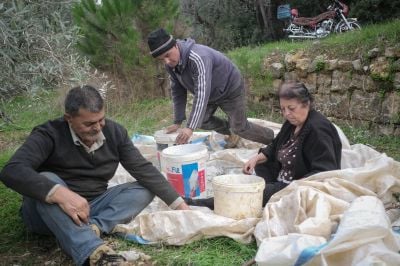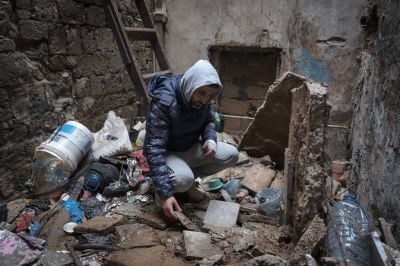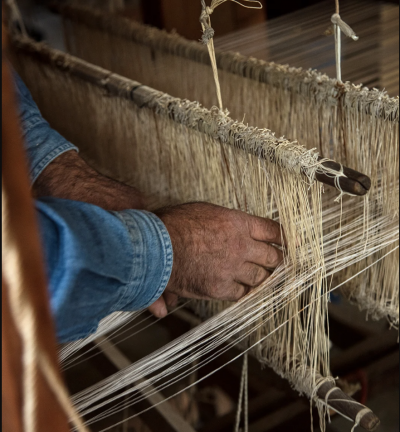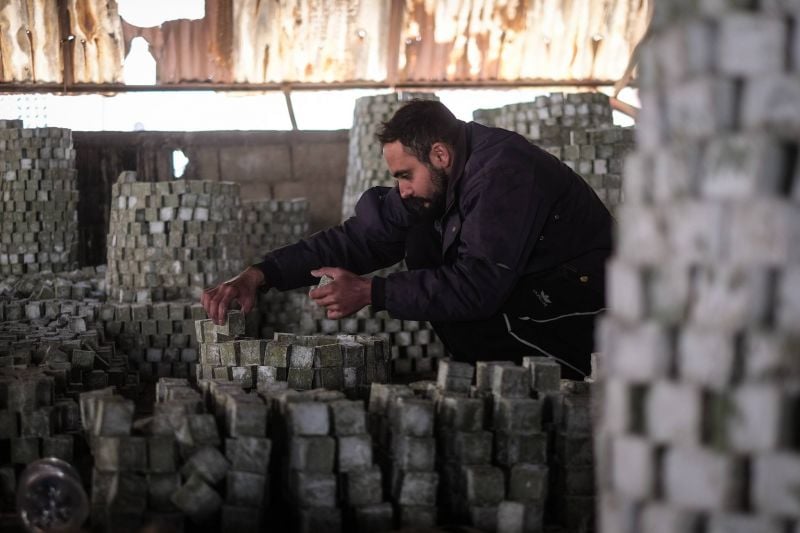
The soaps are stacked atop of each other in a circular fashion, which prevents them from tumbling. Feb. 9, 2023. (Credit: João Sousa/L'Orient Today)
TRIPOLI — The smell of laurel fills the air inside the nearly 200-year-old soap factory in the northern city of Tripoli.
A fresh batch of soap is being cooked in the giant cast iron cauldron heated by burning firewood. “It’s the same way it’s been done for centuries,” says Nazih Adra, “minus the donkey, of course — we use electricity to operate the machinery today.”
Tripoli is famous for sweets, fisheries and, of course, soap. Unlike other soap factories, Sad-Ein is located outside the traditional souk in the city’s core but is every bit as historic.
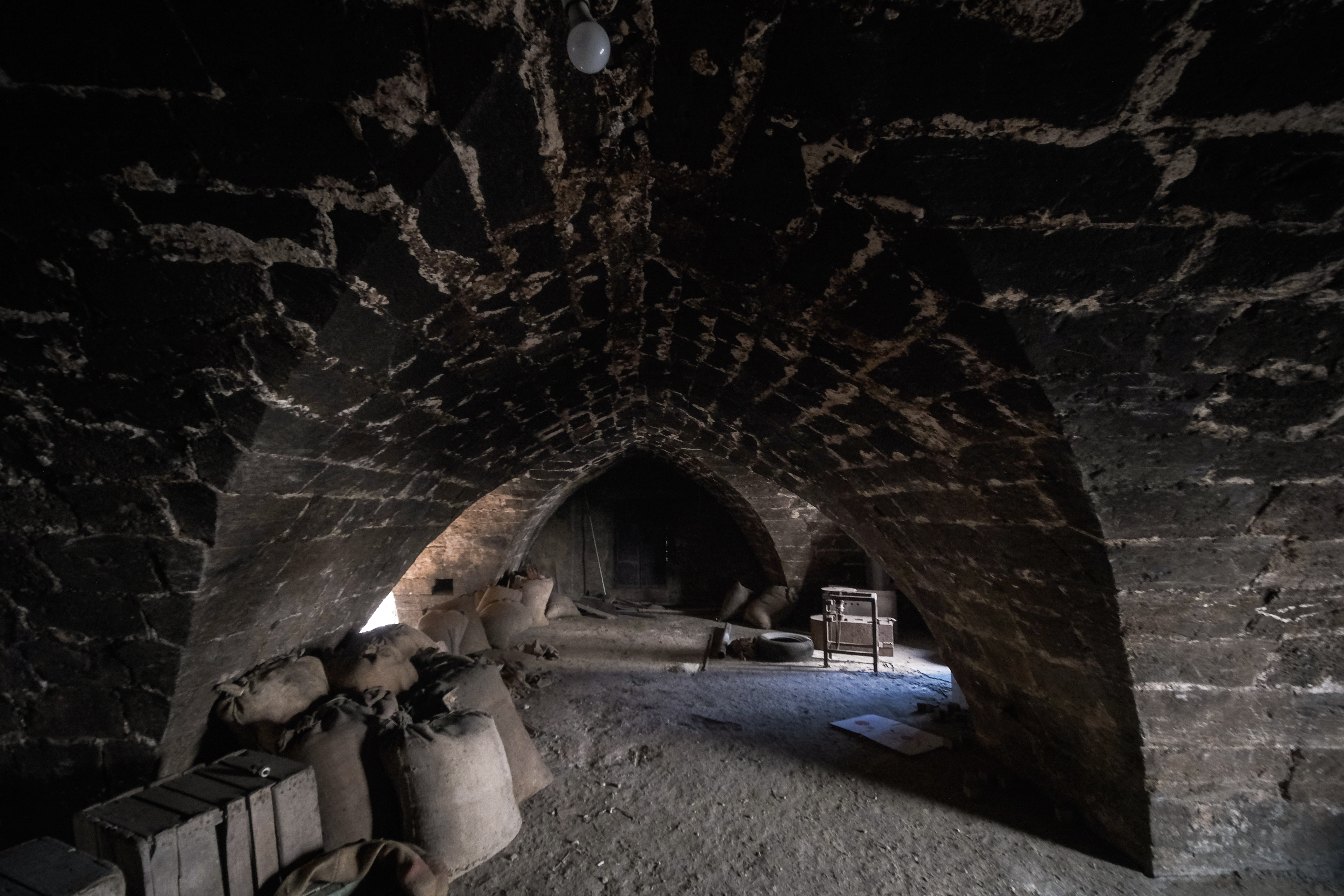 The factory itself is built from sandstone and is adorned with Ottoman arches. Feb. 9, 2023. (Credit: João Sousa/L'Orient Today)
The factory itself is built from sandstone and is adorned with Ottoman arches. Feb. 9, 2023. (Credit: João Sousa/L'Orient Today)
The factory has been churning out soap for more than 100 years now. It was founded by Nazih’s great-grandfather, Sadik Adra, in the 1890s, when he bought the building, and was officially named Sad-Ein in 1912, after Sadik’s initials.
Today, Sad-Ein is famous for its traditional lavender, jasmine and oud soaps.
However, the family says the building that houses the factory is in danger of collapsing due to years of old age and a lack of funds needed for a full-scale renovation, not to mention the recent earthquakes and aftershocks.
The factory itself is built from sandstone and is adorned with Ottoman arches. Inside there are four floors, the first of which houses the cauldron where the soap — a mixture of olive oil, palm oil and caustic soda — is cooked.
On the second floor, the liquid soap is poured and shaped into giant tubs using wooden molds, in which the bars are left to dry. After the soap is cooled and hardened, workers cut it into rock-like bars then haul them in burlap sacks to the roof using a service elevator, which was not part of the original Ottoman structure.
There the soap bars are unpacked and stacked atop each other in a circular shape so that they can dry in the sun. The drying process takes 45 days; the soap bars are then buffed and shaped by a decades-old sanding machine. After they are smoothed, they are embossed with a hammer engraved with the factory’s logo ص ع. (Sad_Ein in Arabic)
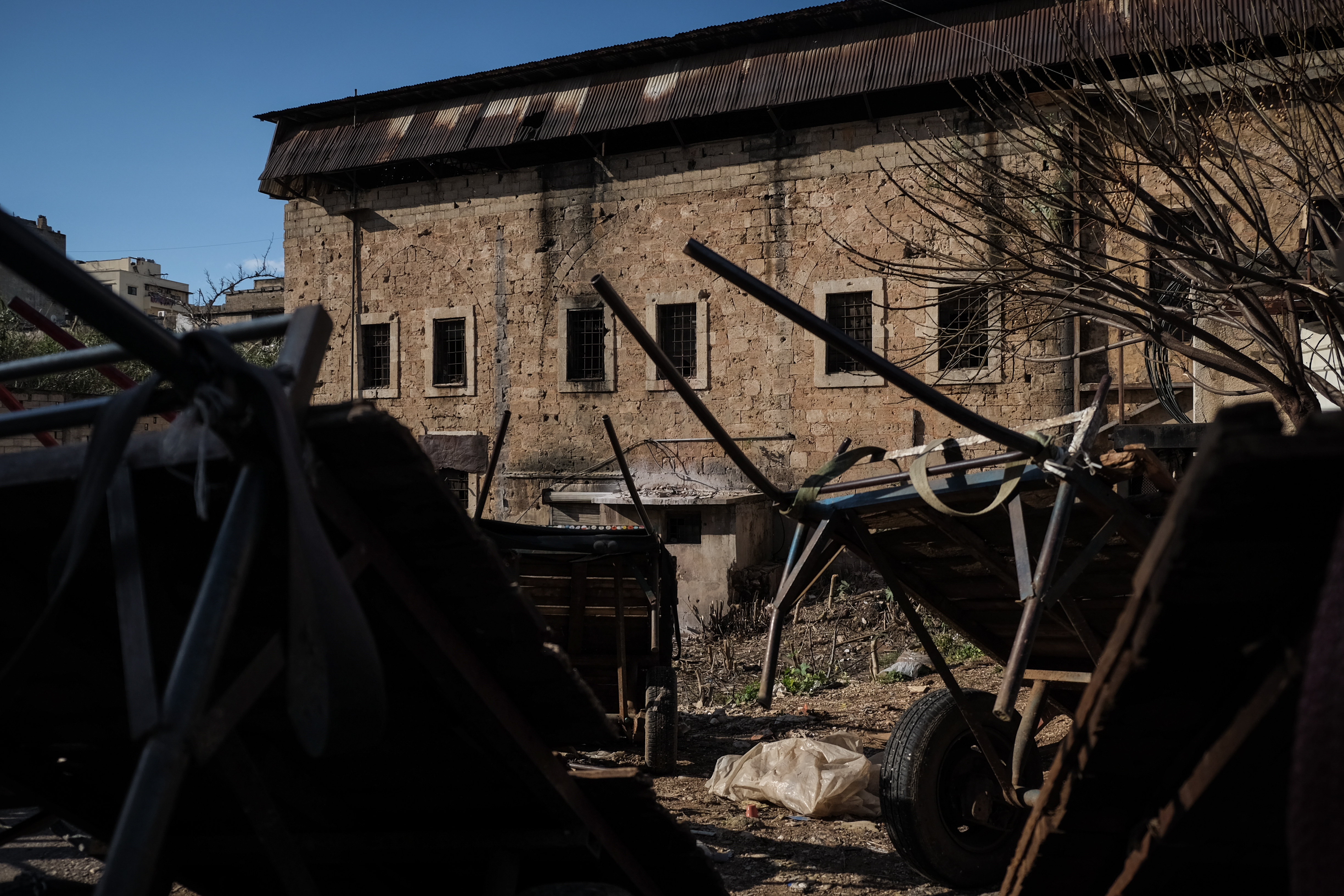 In recent years, the factory has fallen on hard times, and the Ottoman-era building is not in pristine condition. Feb. 9, 2023. (Credit: João Sousa/L'Orient Today)
In recent years, the factory has fallen on hard times, and the Ottoman-era building is not in pristine condition. Feb. 9, 2023. (Credit: João Sousa/L'Orient Today)
According to historian Halil İnalcık in his book An Economic and Social History of the Ottoman Empire, 1300-1914, Tripoli’s proximity to vast olive groves, which fed the city’s soap industry, once made it a top exporter of the product to different parts of the Ottoman Empire (1299–1922).
Ziyad Adra, Nazih’s cousin, says the factory still sources all of its olive oil from the nearby Koura district.
They store it on the basement floor, where it sits beneath metal vents sticky with olive residue to protect it from sunlight.
A heritage building in danger
In recent years, the factory has fallen on hard times, and the building itself is not in pristine condition.
“There are some hazards in certain areas in the building because some walls have fractures due to time, which is very normal,” Nazih says. The family added some steel bracing in the 1990s to keep the building upright but currently, they have no full-scale renovation plan for the factory. Nazih blames the current state of the building on the lack of heritage conservation efforts in Lebanon, specifically in Tripoli.
After the end of the Lebanese Civil War (1975-90), the building was registered as a heritage site, as per the 1933 Cultural Property law, and is registered on the General
Inventory of Historic Monuments. Despite this distinction, Nazih complains that “there isn’t anyone or any expert that pays a visit to the building and makes sure it’s not falling apart.”
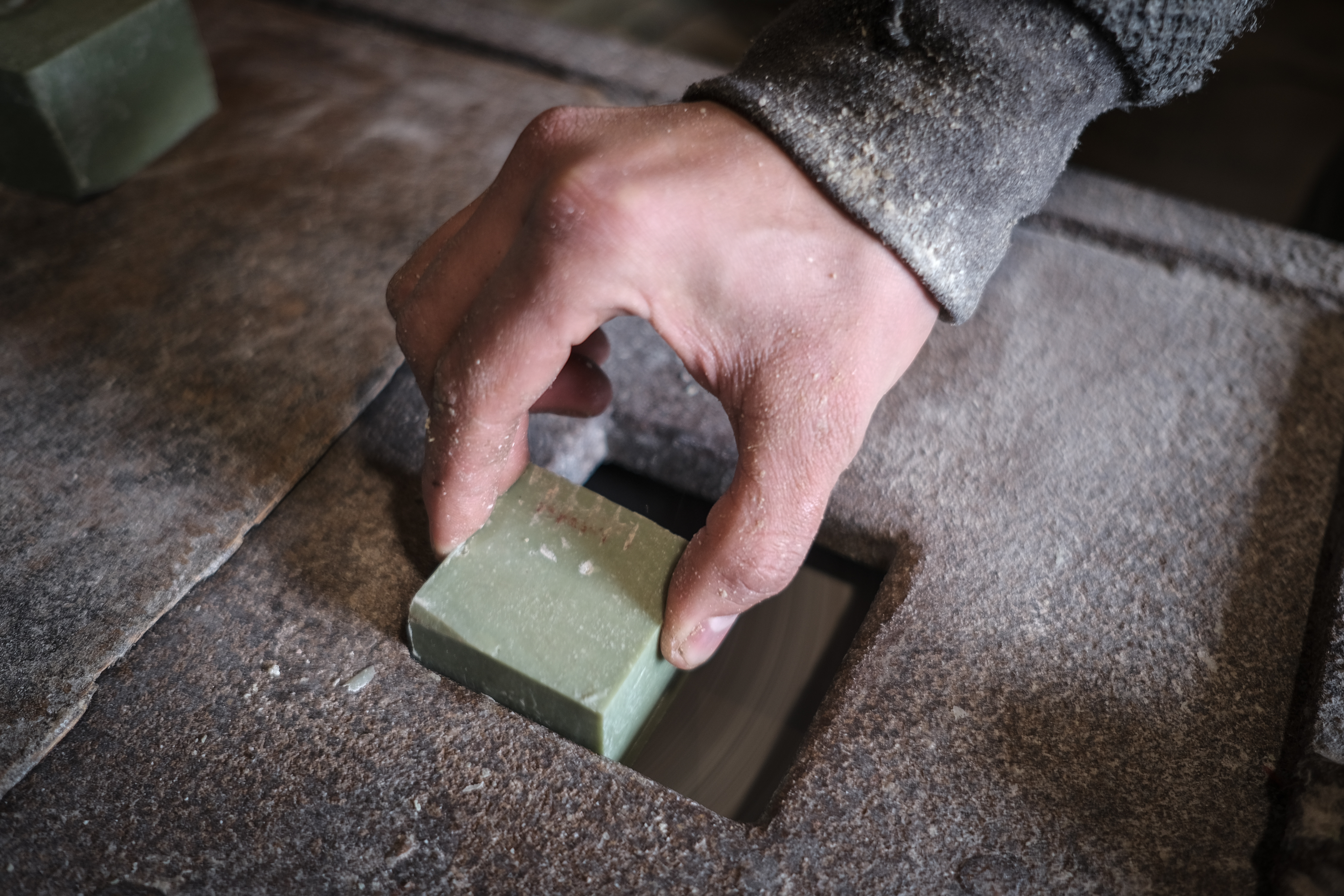 Workers buff and shape the soap bars using a decades-old sanding machine. Feb. 9, 2023. (Credit: João Sousa/L'Orient Today)
Workers buff and shape the soap bars using a decades-old sanding machine. Feb. 9, 2023. (Credit: João Sousa/L'Orient Today)
Worse, because of this law, the Culture Ministry has “preemption rights in case of selling protected property,” meaning the family cannot easily dispose of it.
“We are not planning on selling, but if the business [goes] bankrupt, we would be left with a building that doesn’t do anything and that we don’t really own,” Nazih says.
The few minor heritage laws in place in Lebanon mean that any renovation needs the approval of the Directorate General of Antiquities. This ensures that the character of the structure is not distorted, but it often means having to take the pricier route to upgrade the building.
There are not that many local initiatives willing to support such an intervention.
“There isn’t much intervention from even local or international NGOs when it comes to preserving these kinds of things,” says Nazih, adding that he is looking into getting help from international donors willing to make the investment.
Iman Ammar, an architect and a Tripoli native currently completing a master’s in architectural preservation at the Académie Libanaise Des Beaux-Arts (ALBA), says that Tripoli is always at the bottom of the priority list when it comes to historic preservation. This reflects the wider neglect of the city.
“The city has huge potential. It has a historic core and it even has an airport in its environs that is not used for commercial purposes,” Ammar says.
She adds that “internally, the locals of Tripoli lack awareness about the value of the city’s architectural heritage both in terms of the old city and many other buildings. And this is a problem. And those who are aware are very small in number, and are trying their best to preserve what is left.”
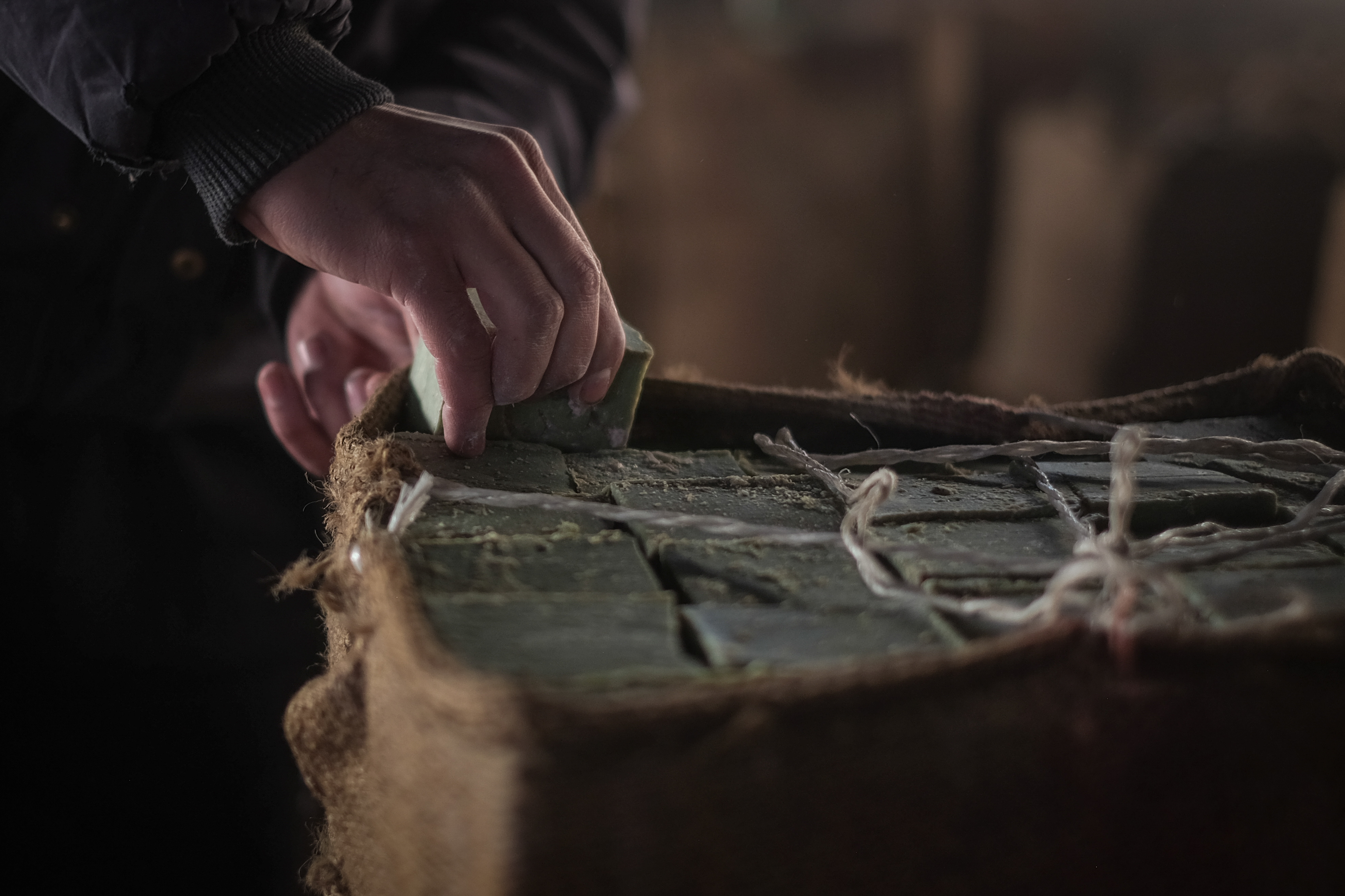 The soap is packed into burlap sacks and then hauled to the roof using a service elevator. Feb. 9, 2023. (Credit: João Sousa/L'Orient Today)
The soap is packed into burlap sacks and then hauled to the roof using a service elevator. Feb. 9, 2023. (Credit: João Sousa/L'Orient Today)
Innovation as a solution?
Pascale Haddad, a 25-year-old computer science graduate student studying in Germany, says she has been using Sad-Ein soap for years, ever since her grandmother in Tripoli introduced it to her.
She told L’Orient Today that it is the only soap brand that reminds her of the traditional Syrian soap she used as a child, thanks to her grandmother. “Last Christmas when I went to Lebanon, when I was packing, she brought me like half a kilo of this soap to take with me.”
“The last time I was in Lebanon I filled a quarter of my suitcase with it before I went back to Germany.”
Still, Nazih says that with the rise of commercial soap in the early 2000s, things took a turn for the worse.
Although Tripoli as a whole is renowned for its traditional soap, most tourists flock to the well-known Khan Al Saboun in the old city center to buy it.
Although Sad-Ein is located outside the souks and near a highway, for Nazih the only thing that drives tourists toward Khan Al Souboun and not his factory is a marketing strategy, because “at the end of the day, we were both born in the same era. And we're both utilizing the same techniques and the same materials.”
He says that the reason Khan Al Saboun is so well known is because they “had the ambition, and then had the money to push their ambition forward. I think they really utilized the market interest in soap. And they implement ideas, they implement scent and color, which is very favorable for the average consumer.”
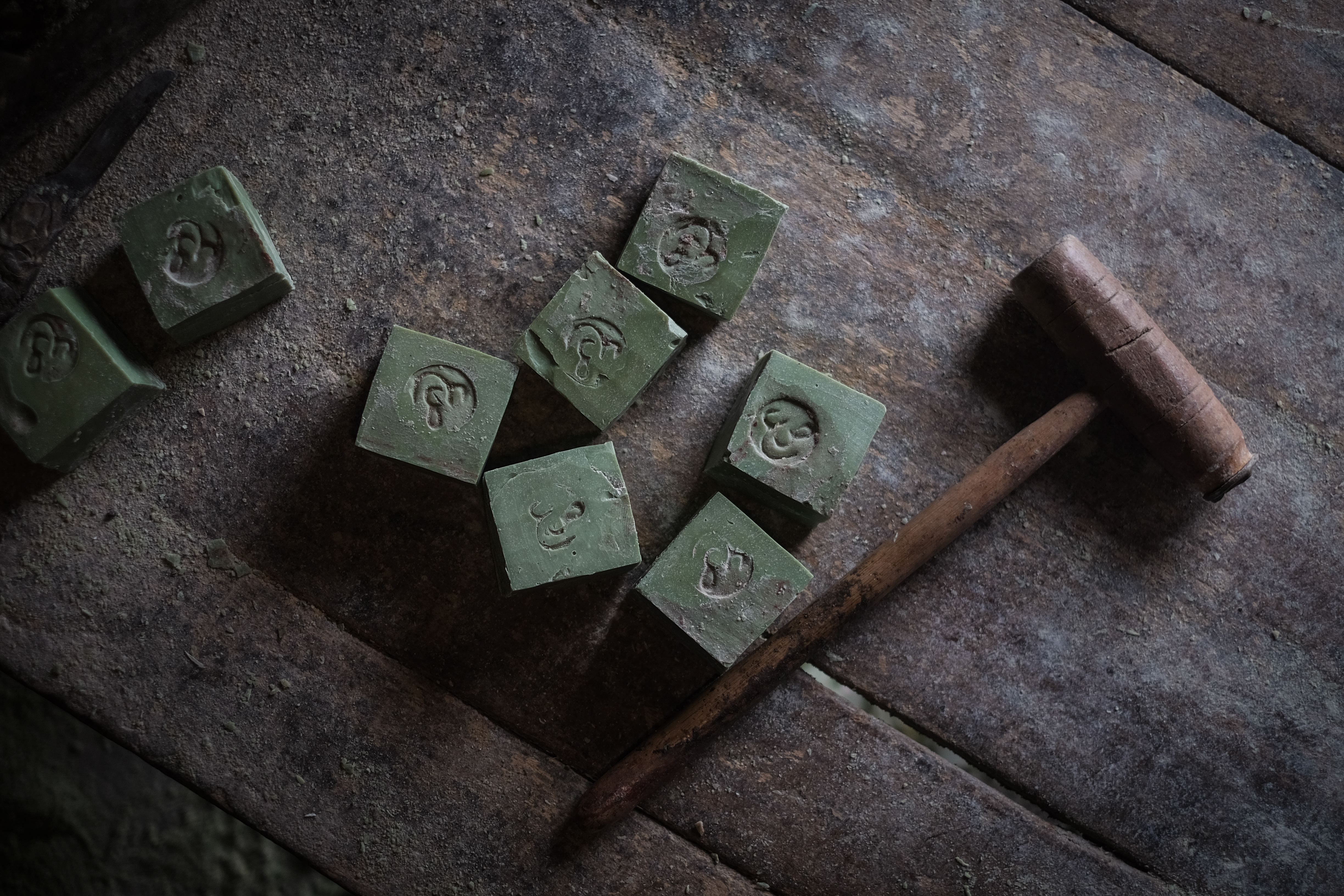 The soap bars are embossed with Sad-Ein’s logo, consisting of the letters ص and ع. Feb. 9, 2023. (Credit: João Sousa/L'Orient Today)
The soap bars are embossed with Sad-Ein’s logo, consisting of the letters ص and ع. Feb. 9, 2023. (Credit: João Sousa/L'Orient Today)
Moving forward, Sad-Ein plans to raise awareness of soap manufacturing and its legacy through different means.
“We are really trying to push forward, even though the economy won’t allow it. We’re not trying to just exist, we’re also trying to push the envelope and innovate and do a lot of research and development such as experimenting with new raw materials and environmentally friendly packaging and product lines,” adds Nazih.
This is on top of possibly turning the factory into a community hub that could welcome outsiders to the factory to make their own soap.
“We’re planning on opening up the factory to tourists, schools and locals and hosting workshops in the future so people can sign up and participate in making their own soap, not just the people of the area, but also people from all over the country,” Adra says.
“We’re not just trying to make money, we’re actually doing this for the community itself,” says Nazih. This also means ensuring environmental sustainability by making sure that no plastic is used in their packaging. He hopes that if all goes well more local residents will be employed and this will benefit the local economy.
This, he hopes, can keep the tradition of old-fashioned soap-making alive: “The craftsmanship of the soap has to remain as is and the way that it is made, from A to Z.”
They also have plans to increase sales by targeting the diaspora, including customers like Haddad in Germany.
“This is the only market for it at the moment. The only place where I can generate money to be poured back into sustaining and rehabilitating the factory.”
